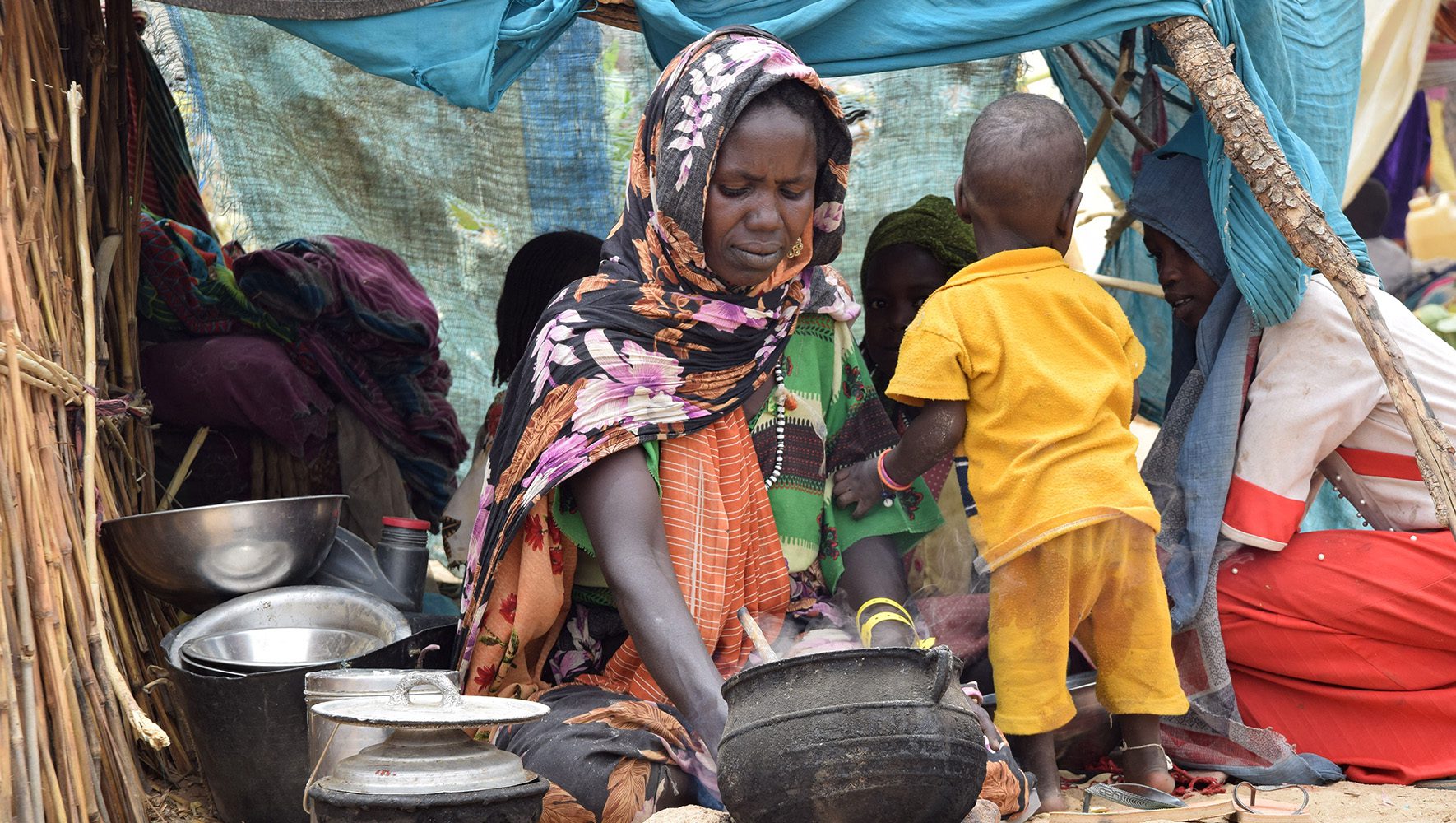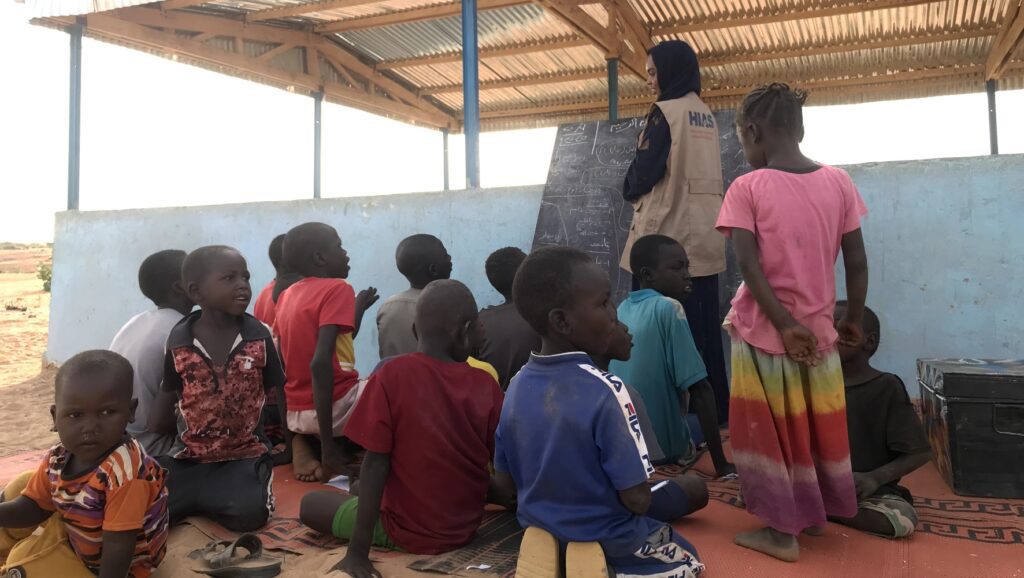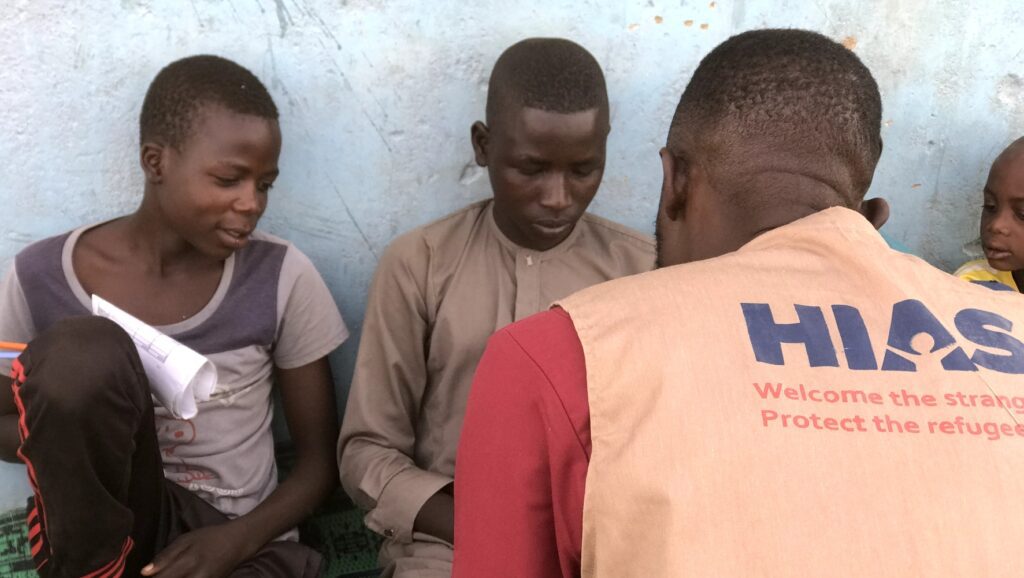
In the months since civil conflict in Sudan first sent thousands of refugees across Chad’s eastern border in April, global media attention has gradually waned. But the crisis has not disappeared. Over 370,000 refugees are estimated to have crossed into Chad, of whom the majority are Sudanese nationals. This number could reach as high as 600,000 by the end of 2023. 87% of those arriving in Chad are women and children. Refugees have temporarily settled in a number of camps along the Chad/Sudan border, where some residents, displaced by previous conflicts, have lived for almost two decades.
Chad is one of the world’s poorest and most remote countries. No other nation has a lower concentration of paved roads. Seasonal rains cause widespread flooding across the country, rendering roads in the east impassable. This presents enormous challenges for reaching the thousands of refugees settled in camps along the border with Sudan.
HIAS, which has worked continuously in Chad since 2005, has offered a robust response to the current crisis. Food distribution provided by World Food Program and facilitated by HIAS staffers has reached more than 80,000 people, while thousands of others have received child-protection services — those with special needs have also received help. HIAS has also made a significant impact through work in gender-based violence prevention and mental health support, programs that HIAS has implemented worldwide. HIAS has supplemented the work of its local staff by activating its emergency response team, which has deployed six international staffers with further staff visits to come, and has worked side-by-side with UNHCR as well as other international agencies throughout its tenure in the country.
“Our presence in Chad is significant,” said Patrick Culver, emergency operations manager at HIAS who is currently deployed in the country. “We are everywhere. We’re in every single camp, and every transit camp.”
“Our presence in Chad is significant. We are everywhere. We’re in every single camp, and every transit camp.”Patrick Culver, emergency operations manager, HIAS
In addition to core programmatic work, HIAS is actively engaged in community mobilization, in which refugees learn to educate each other on basic issues and work to resolve conflicts within and between their communities. HIAS also helps to protect more than 4,000 refugees each day who are being relocated inside the camps.
Major challenges remain to Chad’s refugee population. A significant one is malnutrition. In Arkoum, a camp of 40,000 refugees in Chad’s east, malnutrition kills five to 10 children each week. In addition, women collecting firewood to cook meals are exposed to higher risks of gender-based violence, and the large demand for wood has caused widespread environmental degradation. Many camps lack sufficient water and are often without electricity. Existing communities in Chad are often overwhelmed by the influx of displaced people and are not always fairly compensated after being asked to give up their land.
HIAS is committed to helping address these problems. But the sheer numbers of refugees crossing the border from Sudan will require additional care.
“HIAS Chad has been on the front lines since the beginning of this emergency despite the limited resources we initially had,” said Roch Souabedet, country director of HIAS Chad. “We continue to provide lifesaving services and hope to get more funding to help continue to assist the new arrivals as the number keeps increasing. With the deteriorating situation in Sudan, we are expecting more people to flee to Chad to save their lives and that our emergency response will require at least two more years before people become resilient.”


